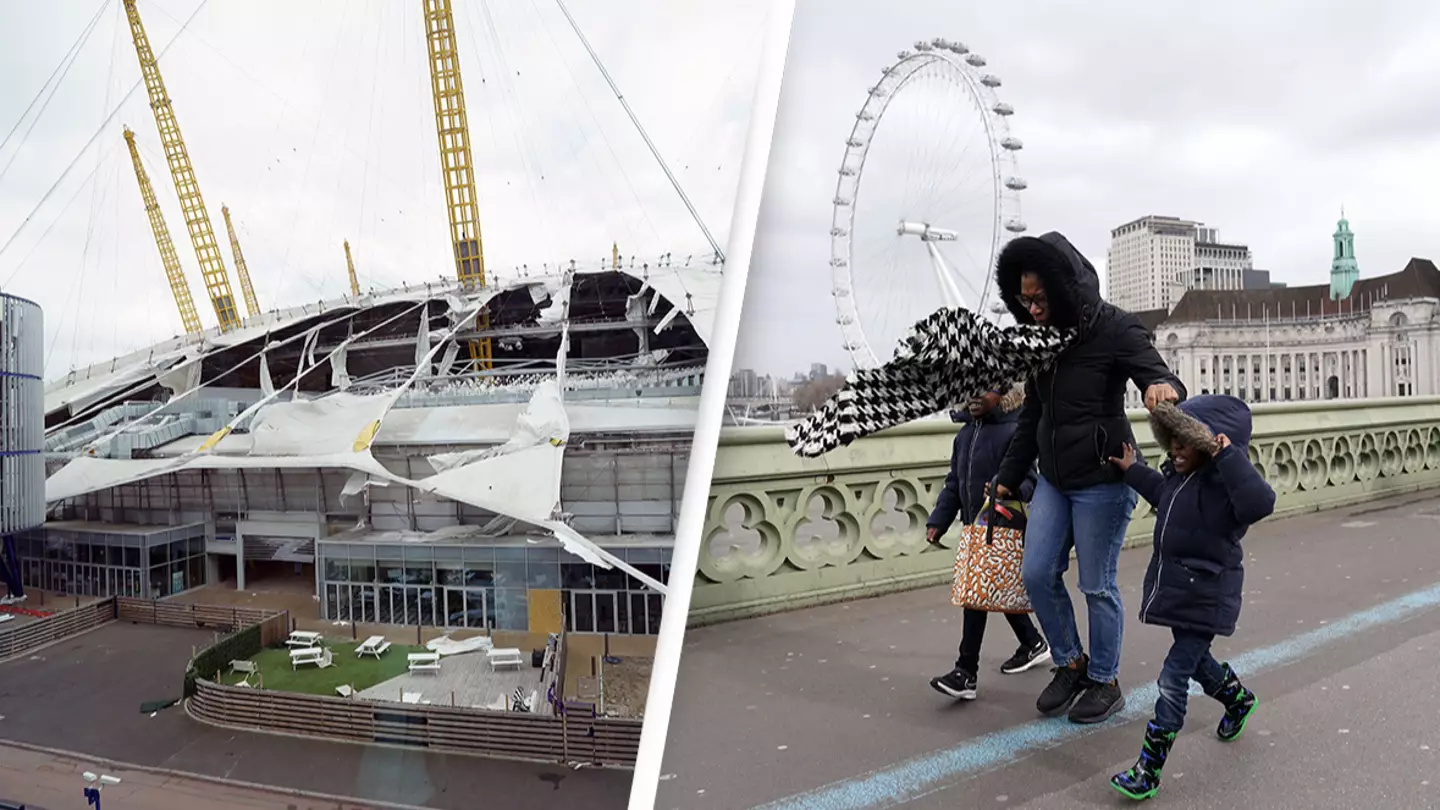
Storm Eunice is currently wreaking havoc across much of the UK, but why is it called Eunice, and for that matter, how does any storm get its name?
Up until today I mostly associated the name Eunice with a side character in the absolute classic 2006 flick She's The Man.
Now, however, Eunice has gone from quiet character in a comedy to tearing up London's O2 Arena in the least musical way possible.
So, how do storms get their names and why?
Well, it turns out the process is pretty simple. As the BBC News points out, the idea of naming a storm is relatively new, with the Met Office starting the practice back in 2015.
Advert
A name is given to a storm that is expected to be significant, or has the potential for an amber or red weather warning to be issued.
These warnings are also issued by the Met Office, with amber meaning there's an 'increased likelihood of impacts from severe weather'.
Meanwhile a red warning (Eunice, we're looking at you) means 'dangerous weather is expected' and that action should be taken to keep safe.
Colour coded warnings are issued to help people prepare and raise awareness for extreme weather. Names do the same thing, as Will Lang, head of Civil Contingencies Services at the Met Office explains.
Advert
'We're all aware of some of the severe weather that has been witnessed across Europe and globally in recent months and we work to use any tool at our disposal to ensure the public is informed of potential risks, and naming storms is just one way we do that,' he said.
'We know naming storms helps raise awareness of the impacts of severe weather and ensures clarity for the public when they need it most.'
And as for how the names chosen?
Advert
This often comes down to public help. The Met Office ask people in the UK to suggest names; more than 10,000 were submitted last year.
The names are then chosen and given to storms in alphabetical order as they occur, remember storm Arwen, Barra and Corrie?
The names often have anecdotes to go with them, for instance Storm Logan was reportedly a nod to one person's goalkeeping grandson who is as 'quick as lightning'.
However, not all letters of the alphabet are used. If your name starts with a Q, U, X, Y or Z there's no storm name for you, sorry; this is an effort to avoid confusion with the US storm naming conventions.
Advert
If you have a story you want to tell, send it to UNILAD via [email protected]